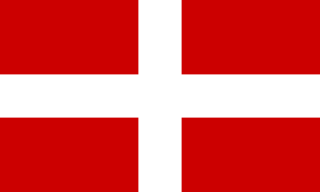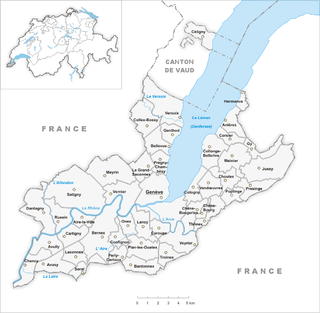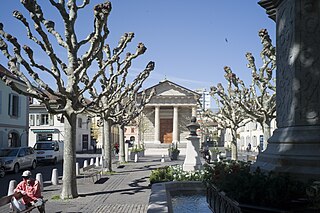
Geneva is the second-most populous city in Switzerland and the most populous city of Romandy, the French-speaking part of Switzerland. Situated in the south west of the country, where the Rhône exits Lake Geneva, it is the capital of the Republic and Canton of Geneva.

Savoy is a cultural-historical region in the Western Alps.

The Canton of Geneva, officially the Republic and Canton of Geneva, is one of the 26 cantons forming the Swiss Confederation. It is composed of forty-five municipalities and the seat of the government and parliament is in the City of Geneva.

Gex is a commune in the Ain department in eastern France and a subprefecture of the department.

The Duchy of Savoy was a country in Western Europe that existed from 1416 to 1847.
Mont-Blanc[mɔ̃ blɑ̃] was a department of the First French Empire. It was named after Mont Blanc, the highest mountain in Western Europe, which marks the border between France and Piedmont. It was formed in 1792, when the Savoy region, was occupied by the French. The department ceased to exist following Napoleon's defeat at Waterloo; the territory was restored to its former rulers.

Léman was a department of the French First Republic and French First Empire. Its name came from the French name of Lake Geneva, Lac Léman. It was formed in 1798, when the Republic of Geneva was annexed by the French Republic. Léman also included districts that were previously part of the departments of Mont-Blanc and Ain. Its territory corresponded with the present Swiss canton of Geneva and parts of the present French departments of Ain and Haute-Savoie.

Carouge is a municipality in the Canton of Geneva, Switzerland.

Jussy is a municipality of the Canton of Geneva, Switzerland. The historical Chateau Du Crest is located here.

Puplinge is a municipality in the canton of Geneva in Switzerland.

Satigny is a municipality of the Canton of Geneva, Switzerland. It is the largest municipality of the canton by land area and the largest wine-producing municipality of the country. Its territory contains the majority of the Mandement area, a designated heritage site of national importance shared with the neighbouring municipalities of Russin and Dardagny.

The arrondissement of Gex is an arrondissement of France in the Ain department in the Auvergne-Rhône-Alpes region. It approximately corresponds to the historical region of the Pays de Gex. It has 27 communes. Its population is 93,027 (2016), and its area is 404.9 km2 (156.3 sq mi).

Charles Pictet de Rochemont was a statesman and diplomat who prepared the declaration of Switzerland's permanent neutrality ratified by the great powers in 1815.

Étrembières is a commune in the Haute-Savoie department in the Auvergne-Rhône-Alpes region in south-eastern France.

The Kingdom of Sardinia, also referred to as the Kingdom ofSavoy-Sardinia, Piedmont-Sardinia, or Savoy-Piedmont-Sardinia during the Savoyard period, was a state in Southern Europe from the early 14th until the mid-19th century.

The territorial evolution of Switzerland occurred primarily with the acquisition of territory by the historical cantons of the Old Swiss Confederacy and its close associates. This gradual expansion took place in two phases, the growth from the medieval Founding Cantons to the "Eight Cantons" during 1332–1353, and the expansion to the "Thirteen Cantons" of the Reformation period during 1481–1513.
The Albanais is a small Savoyard region situated between Lake Annecy and Lac du Bourget, at the entrance to the Parc naturel régional du Massif des Bauges. Located in the French departments of Savoie and Haute-Savoie, its principal city is Rumilly. The name Albanais comes from the Latin Albinnum, which is derived from the names of the tribes Albii whose presence is attested to in the toponymy of places such as Albens, Alby, and Albigny.

The France–Italy border is 515 km long. It runs from the Alps in the north, a region in which it passes over Mont Blanc, down to the Mediterranean coast in the south. Three national parks are located along the border: Vanoise National Park and Mercantour National Park on the French side and Gran Paradiso National Park on the Italian side.

Grand Genève is a Local Grouping of Transnational Cooperation, a public entity under Swiss law, in charge of organizing cooperation within the cross-border metropolitan area of Geneva. The Grand Genève GLCT extends over Switzerland and France.
Treaty of Turin can refer to one of the following treaties signed in the northern Italian town of Turin:
















